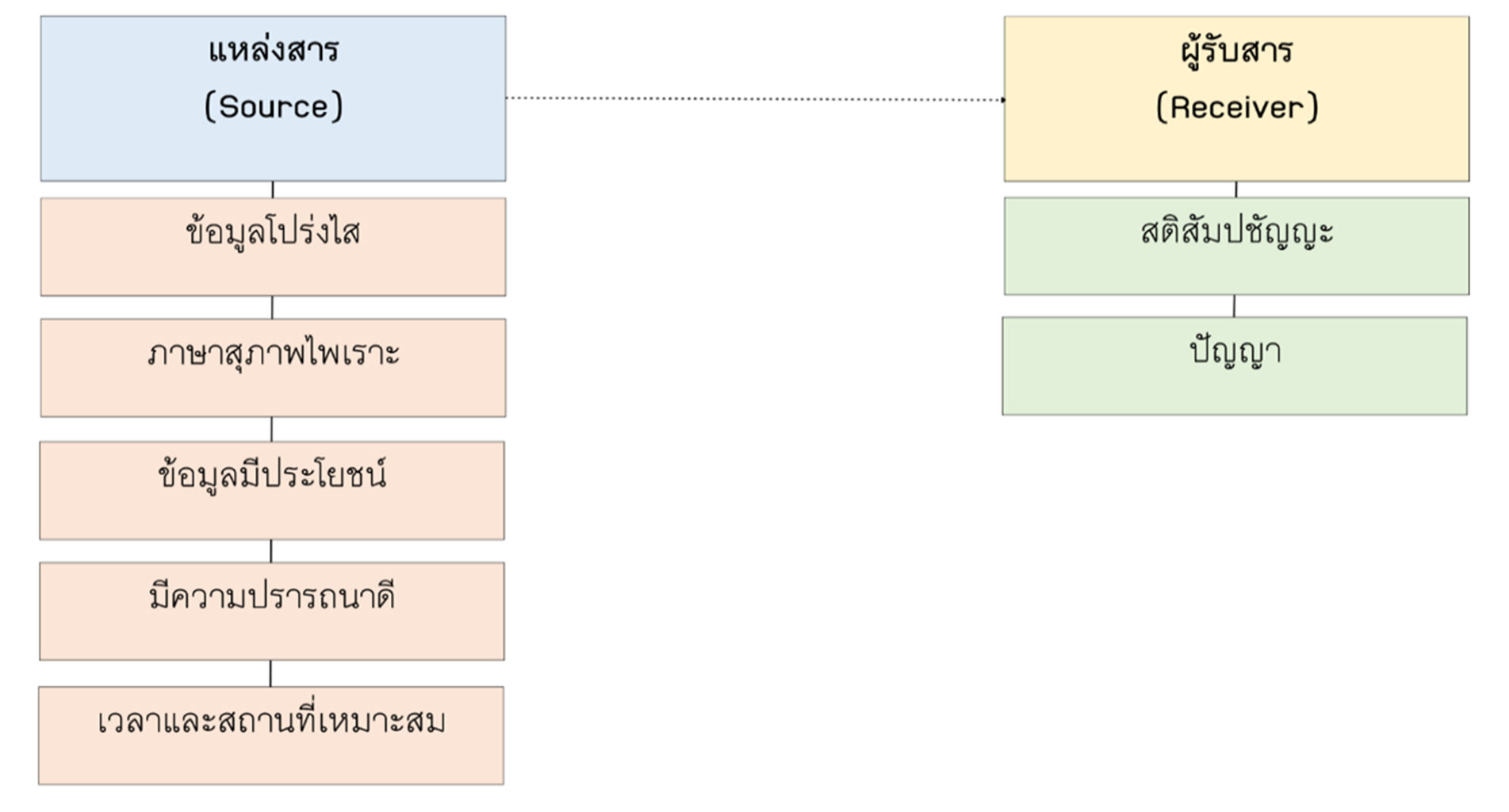POLITICAL COMMUNICATION ACCORDING TO BUDDHIST ETHICAL PRINCIPLES
Keywords:
Communication, Politics, Buddhist EthicsAbstract
The academic article “Political Communication According to the Buddhist Ethical Framework” aims to establish a framework for advancing ethical practices in political communication. This study comprehensively reviews relevant documents, textbooks, and empirical research findings. The analysis reveals that the application of the Buddhist ethical framework to political communication can be delineated into two principal dimensions: 1. For the sender, which is the political organisation, the methods of communication are transparent communication to build trust, using courteous and pleasant language to reduce tension and foster respect, presenting useful information for effective decision-making, demonstrating goodwill and sincerity to build confidence, and selecting appropriate times and places to ensure convenient access to information, 2. For the receiver, which is identified as the public, it is imperative to apply mindfulness and critical discernment in the evaluation of information by thoroughly and methodically analysing the data. Adhering to these principles will significantly enhance the efficacy of political communication and contribute to the development of a constructive relationship between political entities and the public.
References
ธีรโชติ เกิดแก้ว. (2553). พุทธปรัชญา : มิติการมองโลกและชีวิตตามความจริง. กรุงเทพฯ: สำนักพิมพ์มหาวิทยาลัยหัวเฉียวเฉลิมพระเกียรติ.
พระครูนิยมจันทโพธิ จนฺทสาโร (โพธิ์ศรี). (2553). การประยุกต์ใช้วาจาสุภาษิตในมงคลสูตรกับสังคมไทยปัจจุบัน (วิทยานิพนธ์พุทธศาสตรมหาบัณฑิต สาขาวิชาพระพุทธศาสนา). พระนครศรีอยุธยา: มหาวิทยาลัยมหาจุฬาลงกรณราชวิทยาลัย.
พระธรรมธีรราชมหามุนี (โชดก ญาณสิทฺธิเถร) (2548). วิปัสสนากรรมฐาน ภาค 2 ว่าด้วยมหาสติปัฏฐาน. กรุงเทพฯ: โรงพิมพ์สหธรรมิก จำกัด.
พระพรหมคุณาภรณ์ (ป.อ. ปยุตฺโต). (2549). พุทธธรรม ฉบับปรับปรุงและขยายความ (พิมพ์ครั้งที่ 11). กรุงเทพฯ : โรงพิมพ์บริษัท สหธรรมิก จำกัด.
พระมหาศรีสุพรณ์ อตฺตทีโป (คำนนท์). (2549). การประยุกต์ใช้วาจาสุภาษิตที่ปรากฏในคัมภีร์ขุททกนิกายเพื่อการเผยแผ่พระพุทธศาสนา (วิทยานิพนธ์พุทธศาสตรมหาบัณฑิต สาขาวิชาธรรมนิเทศ). พระนครศรีอยุธยา: มหาวิทยาลัยมหาจุฬาลงกรณราชวิทยาลัย.
พระมหาหรรษา ธมฺมหาโส. (2554). พุทธสันติวิธี : การบูรณาการหลักการและเครื่องมือจัดการความขัดแย้ง. กรุงเทพฯ: บริษัท 21 เซ็นจูรี่ จำกัด.
________. (2557). พระพุทธศาสนากับวิทยาการสมัยใหม่. กรุงเทพฯ: มหาวิทยาลัยมหาจุฬาลงกรณราชวิทยาลัย.
พระปลัดสมชาย ปโยโค (ดำเนิน). (2555). ผู้นำกับการใช้วาจาในการบริหารงานอย่างสร้างสรรค์ (รายงานวิจัย). พระนครศรีอยุธยา: มหาวิทยาลัยมหาจุฬาลงกรณราชวิทยาลัย.
พิชิต ทนงค์. (2550). การสื่อสารทางการเมืองกับการสร้างอัตลักษณ์ประชาธิปไตยของเยาวชนในจังหวัดอุบลราชธานี (วิทยานิพนธ์ศิลปะศาสตรมหาบัณฑิต สาขาวิชารัฐศาสตร์). กรุงเทพฯ: มหาวิทยาลัยรามคำแหง.
พุทธทาสภิกขุ. (ม.ป.ป.). ตามรอยพระอรหันต์. กรุงเทพฯ: ธรรมสภา.
มหาจุฬาลงกรณราชวิทยาลัย. (2539). พระไตรปิฎกฉบับภาษาไทย ฉบับมหาจุฬาลงกรณราชวิทยาลัย. กรุงเทพฯ: โรงพิมพ์มหาจุฬาลงกรณราชวิทยาลัย.
สมเด็จพระมหาวีรวงศ์ พิมพ์ ธมฺมธโร. (2541). บทสร้างนิสัยแบบอย่าง. กรุงเทพฯ: มหามกุฏราชวิทยาลัย.
สุภางค์ จันทวานิช. (2554). ทฤษฎีสังคมวิทยา. กรุงเทพฯ: สำนักพิมพ์แห่งจุฬาลงกรณ์มหาวิทยาลัย.
สุรพงษ์ โสธนะเสถียร. (2545). การสื่อสารกับการเมือง. กรุงเทพฯ: ประสิทธิภัณฑ์ แอนด์ พริ้นติ้ง.
อรวรรณ ปิลันธน์โอวาท. (2544). การสื่อสารเพื่อการโน้มน้าวใจ (พิมพ์ครั้งที่ 2). กรุงเทพฯ: พิมพ์ลักษณ์.
Denton, R.E. & Woodward, G.C. (1990). Political Communication in America. New York: Praeger.
Huggins, R. & Turner, J. (1997). The politics of influence and control. In B. Axford (Ed.), Politics: An Introduction Routledge.
McNair, B. (1999). An Introduction to Political Communication. New York: Routledge.
Ranney, A. (1993). Governing: An introduction to political science. (6th ed.). New Jersey: Prentice Hall International







